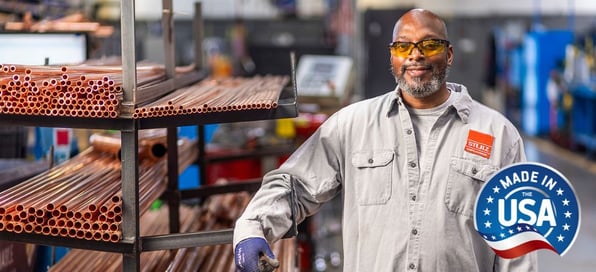Join us as for a Q&A session with Dave Meadows about why STULZ decided to begin using R-454B as a refrigerant in our precision-cooling product line.
First, Let's get to know Dave!
Dave has over 25 years of experience in mission-critical technologies and participates in numerous industry committees and panels throughout the year. He is a voting member on several ASHRAE committees and participates in the AHRI data com standards committee. He holds multiple US patents for data center cooling devices. Dave got his BS in Mechanical Engineering from the University of Maryland, Baltimore County, and is a proud graduate of the United States Navy Nuclear Power School. While in the Navy, Dave became a shellback with dolphins and a member of the "Order of the Ditch". Dave has held several key positions at STULZ, including leadership in the Engineering and Application Engineering teams. He is currently the Director of Technology at STULZ USA and travels extensively to events and customer sites.
Now, let’s dive into STULZ’s decision to use R-454B as a refrigerant with Dave.
Alyssa: I’m talking today with Dave Meadows, STULZ USA’s Director of Technology about the choice of a new low GWP refrigerant for our North American computer room air conditioners (CRACS). Dave, can you give us some background on why we are changing refrigerants and what refrigerants we will be using in the future?
Dave: Glad to, Alyssa. Late in 2023 the Environmental Protection Agency (EPA) released their final ruling on the Global Warming Potential (GWP) limit for computer room air conditioners. It mandated a maximum GWP of 700 and goes into effect on January 1, 2027.
Alyssa: So that is the “why” we are changing refrigerants. Can you share any insights into the selection process to choose a new refrigerant?
Dave: Well, there were some challenges. We really had two mandates from the federal government; one was the GWP limit from the EPA and the other was the minimum efficiency metric that is found in Title 10 code of federal regulations. This requirement comes from the Department of Energy and specifies minimum energy efficiencies for CRACs as well as the test method for determining these efficiencies.
Alyssa: Are these minimum efficiencies specific to our industry or are they more general? Can you share some details of these requirements?
Dave: They are very specific to computer room air conditioners. Our energy efficiency metric is different from the EERs or SEERs associated with comfort cooling. We must meet a minimum NsenCOP. The NsenCOP is the net sensible coefficient of performance, and it is defined in the AHRI 1360 standard. Basically, it is the net sensible cooling we achieve at specified return air conditions divided by the power it takes to provide that cooling. We only get credit for the sensible cooling we do because generally we don’t want to dehumidify the space being cooled. Very dry air can lead to electrostatic discharge failures of the information technology equipment that we are cooling.
Alyssa: So, we have two main requirements that we need to meet, did that narrow down our possible choices of new refrigerants?
Dave: Yes, it narrowed it down significantly. We identified two commonly available refrigerants that were below the GWP threshold that would still give us the required efficiency within a reasonable footprint. They are R-32 and R-454B. We chose R-454B.
Alyssa: Why is R-454B the winner going forward?
Dave: The efficiencies were very close between the two. R-454B had a lower GWP than R-32 and our research seemed to indicate that the components manufactures such as Copland, Danfoss, and Sporlan were going to concentrate their development efforts on R-454B. Now that other companies have announced their selection of new refrigerants for CRACs, I think it’s safe to say that we read the tea leaves correctly.
Alyssa: Are there major differences between R-454B and the R-410A that we have been using for years?
Dave: Yes and no. Both refrigerants operate at around the same pressures and temperatures. I guess the biggest difference is that R-454B is an A2L refrigerant, which means that it is mildly flammable. In the past, building codes would not have permitted the use of A2L refrigerants for direct air conditioning but that changed in 2023. Also, the new UL safety standard UL 60335-2-40 was updated to allow us to use an A2L refrigerant. We have some new safety requirements that we’ll need to incorporate into our units such as refrigerant sensors and alarms. Additionally, the building designers will have some new ventilation requirements to consider, but other than that not much will change.
Alyssa: Dave, thanks for sharing this information today, any last thoughts on the refrigerant change over.
Dave: Yes, this is the second major refrigerant change I’ve been through, I started out in the world of R-22 CRACs, and I kinda hope this is my last!
Want to learn more about how our refrigerant selection also supports sustainability?
Check out our Low GWP Refrigerants vs. Energy Efficiency: A Holistic Approach to Sustainability blog






Blog Comments